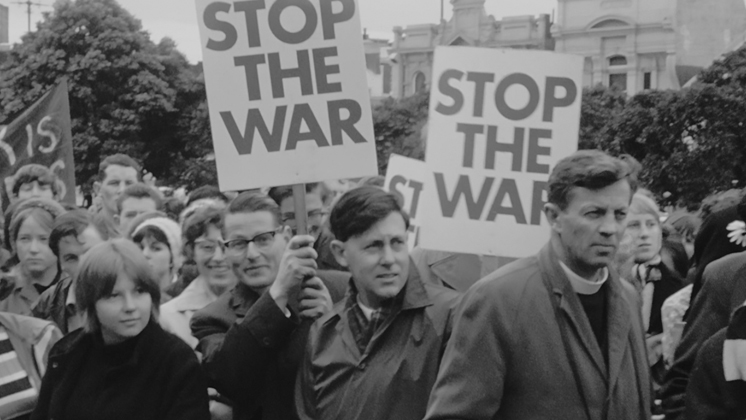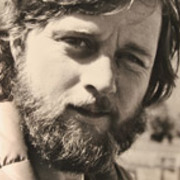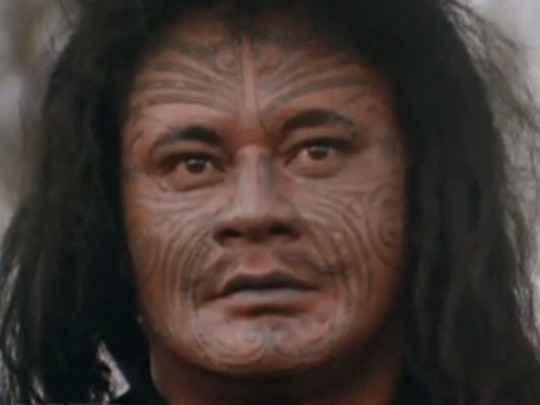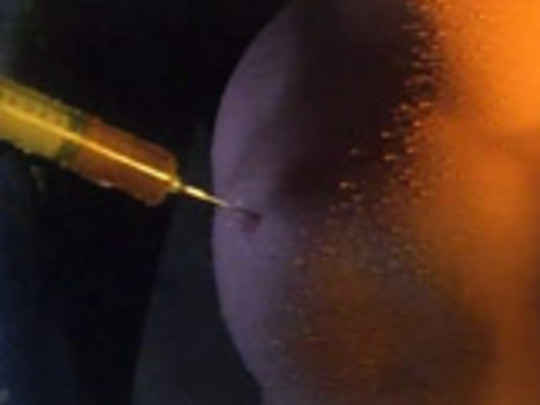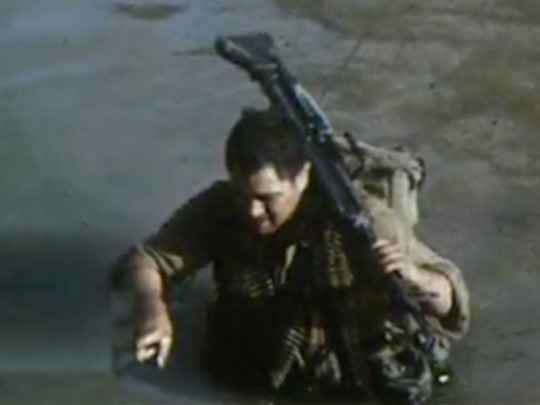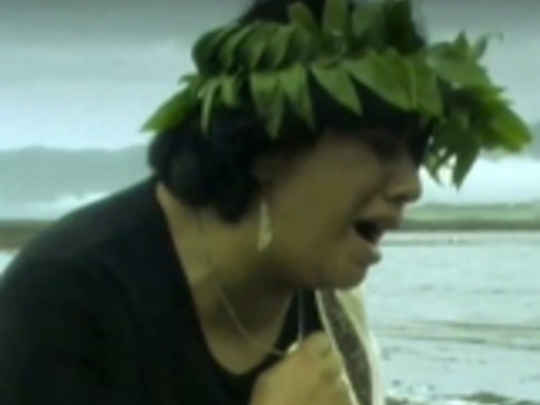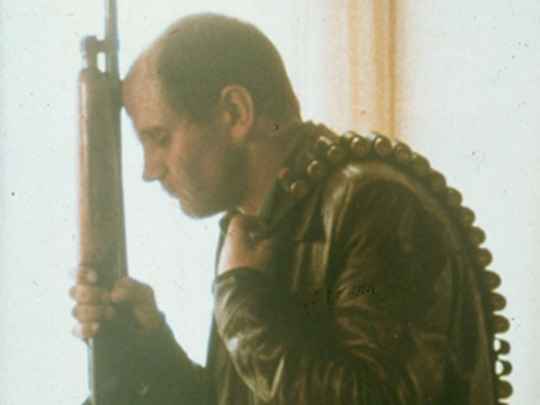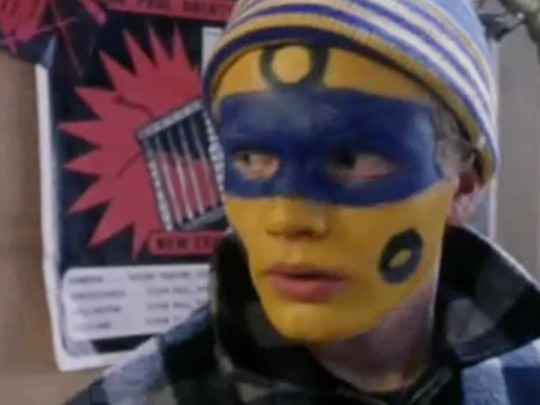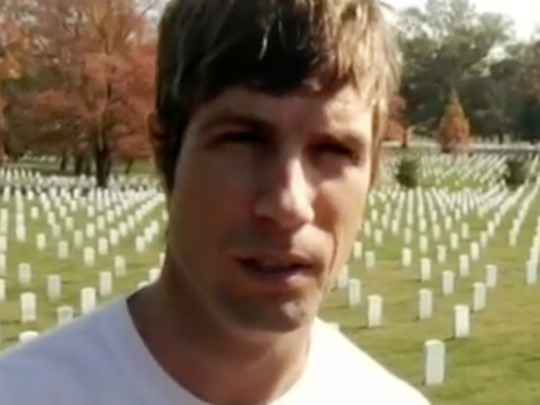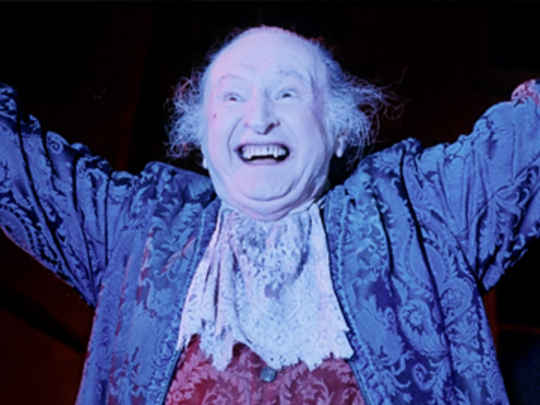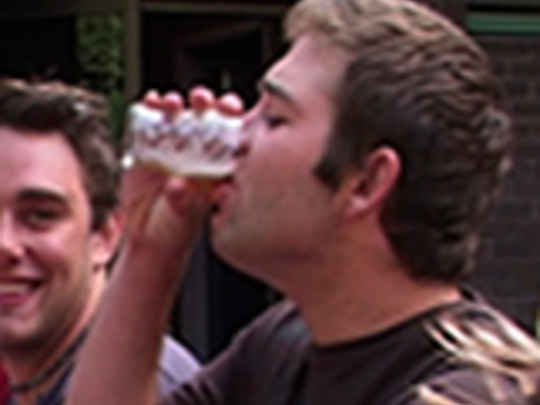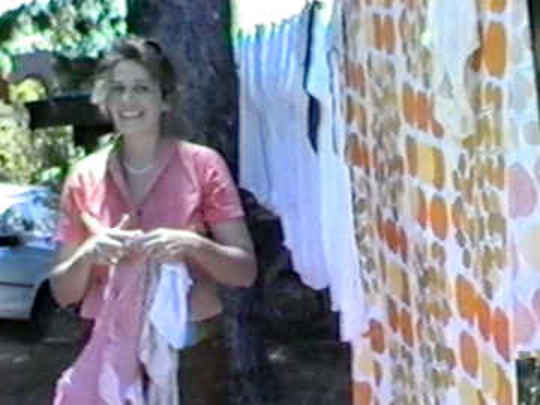The Beaconsfield Films
Short Film (Full Length) – 1967
Flatmates and Filmmakers: Making Movies in the 60s
In 1967 as a young university student with my own movie camera and a desire to make films, I joined forces with some like-minded friends. Michael Heath and Rex Benson and I were flatmates living in a grand villa called Beaconsfield, at 183 The Terrace in Wellington. All of us were big fans of the New Wave cinema coming out of Europe.
Enthusiastic to do our own thing, we roamed the city and environs and made some films. These films gave us an opportunity to play hands-on with ideas inspired by the films we were seeing. They are our made-up as you go, experimental efforts to discover the language of film.
The restoration of three of these films was carried out with minimum intervention. The original 16mm print had suffered countless indignities over the years. Fortunately, it was still in reasonable condition. Now, after cleaning, repairing edits and tidying up the titles, all is pretty much as before.
The soundtrack was the biggest challenge. The original dialogue, sound effects and music had been recorded simultaneously onto a single tape. For screenings, the audio was synchronised by hand — adjusting the speed to match the picture — meaning the soundtrack was always somewhat fluid. Now the audio has been synchronised with the picture, as originally intended. The aim has been to retain the fluidity and energy of the original live recordings.
These films were very much a reflection of the context in which they were made — the university environment of 1967. A good indication of student preoccupations can be seen in the university magazines of the time. High on the agenda were articles about the Vietnam War, censorship, sexual liberation, art in general and cinema. A wide range of topics for a new and impatient generation of enquiring minds.
Cinemagoing was popular in New Zealand at the time, and new films from overseas were in vogue. It was also an active time for the country's film societies who were sourcing many New Wave films, some of them from embassies and high commissions keen to fly national flags. At Beaconsfield (the name was on a golden plaque on the outside of the flat) we were in our element: we had our own projector and were able to source many of these films for our own private viewing.
With this sort of background, it wasn't surprising that a new film event was added to the 1967 NZ Universities Arts Festival at Canterbury University. For the first time, there would be a combined screening of films from all the Kiwi universities. An initiative of John Reid, a student at Canterbury, the screening was a great success. Five universities took part, and nine student films (along with others) were shown.
The guest of honour was John O’Shea, a renowned independent producer/director and a strong proponent for an indigenous film culture and independent film industry. In a spirited speech he celebrated the inclusion of the student films as part of the festival programme.
He was highly critical, however, of the current government influence over filmmaking in New Zealand, and its overriding demand to fly a positive national flag for trade and tourism, via the National Film Unit. He lamented the lack of films portraying the character and realities of the nation. He hoped that the films being screened at the festival would display a new and fresh approach to filmmaking in New Zealand.
Did the screening display a fresh and new approach to filmmaking? Perhaps this was not so apparent in the films themselves; but it was certainly shown in the enthusiasm of the students, and their efforts to learn the language and possibilities of film.
I attended the festival and screened two films. One was On the Mud, which gave a small glimpse of a new approach to documentaries that would blossom later in the documentaries Michael Heath made with director Tony Williams.
That festival in 1967 was certainly an inspiration for me. It confirmed my desire for filmmaking to be more accessible to my generation. That year I'd written in student magazine Salient about the lack of equipment and knowledge available to emerging filmmakers — and the independent film co-op we'd recently formed, in the hope of improving things. After the festival John O’Shea offered me a job at Pacific Film Productions. I worked there as a director and cameraman for the next three and a half years, before heading off to England try my luck in the film industry there.
Shortly after the making of these films Michael met Tony Williams, who was working at Pacific Films. The pair worked together on a series of groundbreaking documentaries, including Lost in the Garden of the World, which introduced a new generation of international filmmakers at the 1975 Cannes Film Festival. Michael went on to write or co-write the screenplays for Sam Pillsbury's The Scarecrow, Tony Williams’ Next of Kin, and David Blyth's Death Warmed Up and Moonrise. He directed two documentaries on the painter Edith Collier, and film A Small Life.
Rex was the glue that held our cooperative filmmaking efforts together. His knowledge of film, music, and just about everything —along with his quiet bemusement— was crucial. After being involved with our student films, Rex’s passion for cinema and music continued unabated. He ran the Victoria University Film Society, wrote reviews for Salient and was involved for many years helping the NZ Symphony Orchestra in administrative and supportive roles.
- After time overseas, Graeme Cowley returned home and set up a camera hire company in the mid 1970s. After working on independently made drama series Winners and Losers, he went on to shoot films Smash Palace, Utu, Mauri and Carry Me Back (which he also produced).
